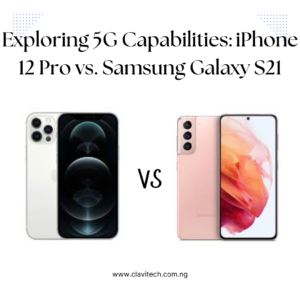
The Role of AI in Smartphone Cameras: How It’s Revolutionizing Photography
Smartphone photography has evolved rapidly over the last decade, and artificial intelligence (AI) is now a key driver behind this transformation. From scene recognition to intelligent image processing, AI technology is enhancing camera capabilities, allowing smartphones to produce photos that rival those of dedicated cameras. This post explores how AI in smartphone cameras is changing the way we take photos and what this means for the future of photography.
Understanding AI in Smartphone Cameras
AI in smartphone cameras leverages machine learning and data processing to recognize objects, adjust settings, and apply enhancements in real time. These capabilities make it possible for even beginner photographers to capture professional-quality images effortlessly. AI has become a standard feature in most flagship devices, and its applications in photography continue to expand.
Key Areas Where AI is Transforming Smartphone Photography
Scene Recognition and Optimization: AI-powered cameras can identify different types of scenes, such as landscapes, portraits, and night shots. Once the scene is identified, the camera automatically adjusts settings like exposure, color balance, and saturation to create an optimal image. This feature enables users to capture high-quality photos without needing to manually adjust settings.
Intelligent Image Processing: AI improves image processing by enhancing details, reducing noise, and sharpening edges. This results in images that are vibrant, clear, and closer to what the human eye sees. For instance, AI can enhance low-light photos by brightening specific areas and preserving details that might otherwise be lost.
AI-Powered Editing Tools: Modern smartphones offer AI-driven editing tools that allow users to edit photos with minimal effort. Features like background blurring, skin smoothing, and color correction are automatically applied, and users can fine-tune them to their liking. Some phones even offer an AI-powered “portrait mode” that detects faces and blurs the background, creating a professional look.
Real-Time Enhancements: AI can apply enhancements in real-time, enabling users to preview how the final image will look before taking the photo. This feature is particularly useful for live events, where photographers need to capture the moment as it happens.
The Future of AI in Smartphone Photography
AI technology in smartphone cameras is expected to continue advancing, with improvements in facial recognition, augmented reality integration, and real-time 3D mapping. By 2025, we may see smartphones capable of capturing complex scenes, such as those with multiple moving subjects, with precision.
Conclusion
AI has brought significant changes to smartphone photography, making it more accessible and allowing users to capture high-quality images effortlessly. As AI technology continues to evolve, we can expect even more sophisticated features that will redefine what’s possible with smartphone cameras.



















Post Comment